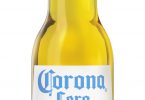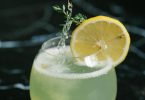Pink gin purchasing hits 0.5m bottles
Ireland’s drinks industry remains one of the nation’s most dynamic and innovative sectors, with growing demand in export markets, according to the Alcohol Beverage Federation of Ireland which has released an overview of the industry for 2018.
Spirits high
There are now 21 operational whiskey distilleries in Ireland, up from just four at the start of the decade. As the Irish whiskey industry continued to grow in 2018, maintaining its position as the fastest-growing premium spirits category in the world, Irish gin made a splash of its own in the domestic and export markets. Exports of Irish gin were up 213% to €4.2 million in first nine months of 2018.
There are now over 20 gin producers and over 50 gin brands in Ireland with 12 new brands introduced in 2018.
Irish cream recovering from ‘lost decade’
Irish cream liqueur also enjoyed a strong 2018 after recovering from a ‘lost decade’ in 2017. Preliminary interim export statistics for 2018 suggest a growth in exports of approximately 8% for the year, driven by strong rise in exports to the US. Additionally, interim retail statistics for 2018 suggest continued sustained growth of approximately 7% in the Irish off-trade for Irish cream liqueur.
Emergence of light and zero alcohol beers in 2018
Beer remains Ireland’s favourite tipple, with a 45% market share of all alcohol consumed in 2017. The last few years have been marked by the craft beer revolution which has invigorated the beer sector through a plethora of new products being introduced to the market.
But 2018 also saw the emergence of lighter lager options, hovering around 4% ABV and this year it’s anticipated that Low and Non-Alcoholic beers will become increasingly popular.
Ireland remains a major exporter of beer. Beer exports by volume rose marginally by 0.2% in 2017 and were valued at €273 million, making Ireland the eighth-largest beer exporter in Europe
Emergence of craft cider leading to more consumer choice
Like the beer sector, consumers are benefiting from a craft revolution in the cider sector evident in pubs and on shelves.
In 2016 cider consumption accounted for 7.5% of all alcohol consumed. This grew to 7.7% in 2017.
Continuing love affair with wine sees increase in rosé consumption
Since 2000 the popularity of wine has grown significantly as Ireland’s love affair with wine continues. Wine’s market share increased marginally from 27.6% in 2016 to 27.7% in 2017 as the sector continued to employ over 1,100 people directly while supporting thousands of other jobs in those pubs, restaurants, independent off licences, supermarkets and hotels that sell wine here.
White wine remains Ireland’s most popular wine with a 50% share while red wine has a 45% market share. Between 2016 and 2017 rosé consumption increased from 3% to 5%
Despite this positive growth, 2019 poses significant risks, according to ABFI, such as Ireland’s disproportionately high excise rates as well as the Public Health (Alcohol) Bill.
Ireland’s excise on alcohol is the second-highest in the EU, points out ABFI. In addition to having the highest excise on wine, Irish consumers pay the second-highest rate on beer in the EU and the third-highest rate on spirits. In order to support innovation and growth in the industry, ABFI will be calling on the Government to reduce excise in 2019.
“While the Public Health Alcohol Act is now on the statute books there remain many unanswered questions in relation to how it will be implemented,” states ABFI, “In 2019 ABFI will be continuing its calls on the Minister for Health to establish an implementation group to include the industry.”
External risks include Brexit, trade wars and tariffs
Unsurprisingly Brexit will be a major threat to Ireland’s business community including the all-island drinks industry, with the UK set to leave the EU in March. Additionally, the prospect of additional trade wars and tariffs are of concern.
The aggregate value of trade in drinks products between the UK and Ireland in 2017 was €364 million, one-third of which – €121 million – was the aggregate value of north-south trade. While contingency plans are being put in place, a no-deal Brexit should be avoided at all costs to minimise risks to trade flows and consumer spending, states ABFI which points out that a no-deal Brexit would be seriously damaging to the all-island drinks industry. Potential consequences include immediate tariffs on cream, barley, malt, glass bottles, apples, finished cider and other supply chain inputs as well as regulatory and custom checks at the Irish border, leading to additional delays and costs.
The US is a major market for Ireland’s drinks industry. Currently there’s a 25% tariff in place on imported US spirits to the EU which is damaging for our global businesses and places us firmly in the firing line for retaliation from the US at any moment, states ABFI.
“In 2018 Ireland’s drinks industry continued to make a vital contribution to the country’s economy, employing 90,000 people and exporting more than €1.25 billion-worth of produce,” said ABFI Director Patricia Callan, “It’s one of Ireland’s most dynamic sectors as it continues to introduce exciting products and break into new export markets.
“Meanwhile alcohol consumption continues to fall. Since 2001 the average per adult alcohol consumption has declined by 23.3% in Ireland.”








